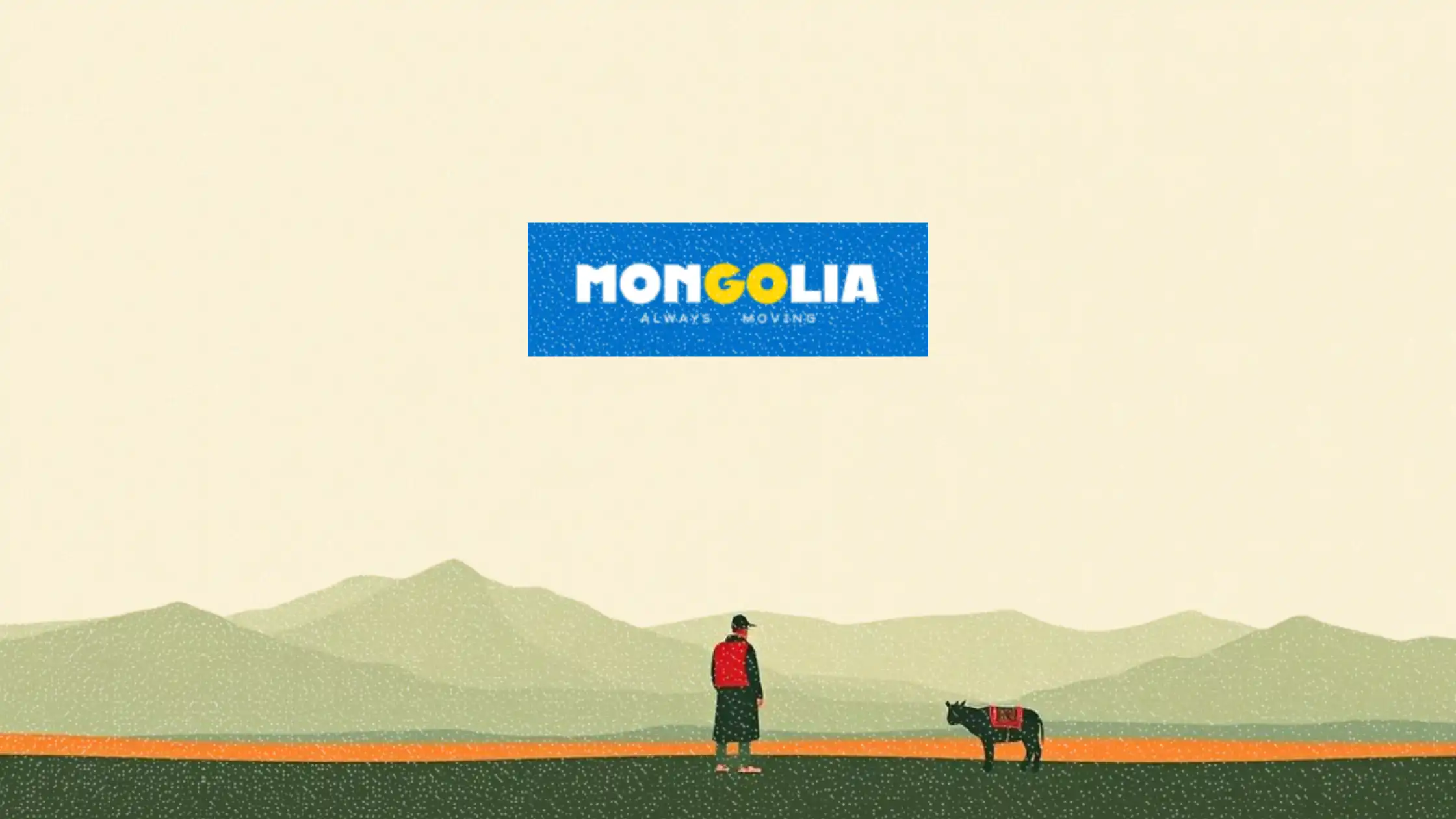
Mongolia is making a bold bid for global attention, and it’s doing it with cinema. A new three-minute film titled Go Mongolia, developed by Edelman, is taking center stage as part of a high-production push to reframe the country’s image internationally.
Streaming now on global news outlets and digital platforms, the film elevates Mongolia’s vast landscapes, cultural identity, and economic potential. But this isn’t just another tourism video. It’s a strategic play to unify the country’s messaging across tourism, trade, and diplomacy.
This article unpacks what the campaign means for place branding, and how marketers can learn from its narrative-first approach.
Short on time?
Here is a table of content for quick access:
- What happened: Mongolia reintroduces itself to the world
- Context: why this national brand push matters now
- What marketers should know

Mongolia reintroduces itself to the world
The film begins with a young Mongolian woman narrating an invitation to “go” with curiosity and openness. As she moves through urban scenes around the world, elements of Mongolian culture surface in subtle but intentional ways — from fashion to food to traditional rituals embedded in everyday moments.
Edelman led the production with backing from the Mongolian Ministry of Culture, Trade and Tourism, and tapped into a wide network of Mongolian creators. Contributors included local animators, bloggers, business leaders, and even the designers behind Mongolia’s Olympic uniforms. The film closes with the same rallying cry: go.
The campaign is part of a larger nation branding effort that launched in 2023. Since then, Mongolia has climbed 14 spots in the Brand Finance Global Soft Power Index, reported record-breaking tourism revenues, and earned the top spot on Lonely Planet’s “Best in Travel 2024” list.
Context: why this national brand push matters now
More countries are embracing cinematic storytelling to shape their global image. But Mongolia’s approach stands out because of its depth and ambition. The “Go Mongolia” campaign fuses cultural storytelling with economic intent — a blend that gives the film relevance across multiple sectors.
Edelman’s creative lead, Tim Green, described the project as both “a rallying cry” and “an identity statement,” noting that the concept of “Go” came from within Mongolia. It captures both motion and intent — a country eager to be explored, invested in, and understood on its own terms.
The campaign is also aligned with real-world shifts. Mongolia has deepened its international engagement, from launching a direct United Airlines route from the US to sponsoring Fulham Football Club and planning cultural showcases at the Paris Olympics.
This type of campaign reflects a larger trend. AirAsia’s recent “Unlock ASEAN in real life” series spotlighted lesser-known destinations through travel vlogs. Meanwhile, Singapore Airlines has embedded cultural pride into its safety video, turning a regulatory asset into a storytelling platform. These efforts show how public and private sectors are using visual storytelling to shape perception at scale.
What marketers should know
Edelman’s Go Mongolia campaign isn’t just visually compelling. It’s strategically sharp. For marketers working in tourism, public policy, or cross-sector branding, the project offers clear lessons on how to tell big, unifying stories across today’s fragmented media landscape.
1. Place branding is becoming platform-native
This campaign wasn’t built for print brochures or government summits. It was built to stream. That means marketers working with destination, culture, or public sector clients need to think in platform-native formats — whether it’s YouTube, TikTok, or OTT.
2. Authenticity means giving locals the mic
Creative control was handed to Mongolian talent, not just global agencies. The result is a campaign that feels real without being cliché. Marketers should take note: co-creation isn’t just good PR, it’s good storytelling.
3. Brand storytelling works beyond business
This campaign proves that storytelling techniques used in product marketing — character arcs, voiceover, visual pacing — are just as effective when promoting a nation or policy initiative. It’s not about where the story lives, it’s about how it’s told.
4. National identity is the new brand architecture
By linking tourism, trade, and culture under a single message, “Go Mongolia” offers a masterclass in brand architecture. Marketers working with multi-stakeholder campaigns should think beyond vertical silos and explore unifying narratives that travel across contexts.
Edelman’s “Go Mongolia” campaign is more than a cinematic flex. It’s a coordinated move to put Mongolia on the map — not just for tourists, but for investors, policymakers, and creators. For marketers, it’s a blueprint for what modern brand building can look like when strategy and story meet at the national level.
As countries and companies compete for attention in a noisy digital landscape, storytelling that taps into identity, purpose, and aspiration may be the most powerful differentiator of all.



Leave a Reply